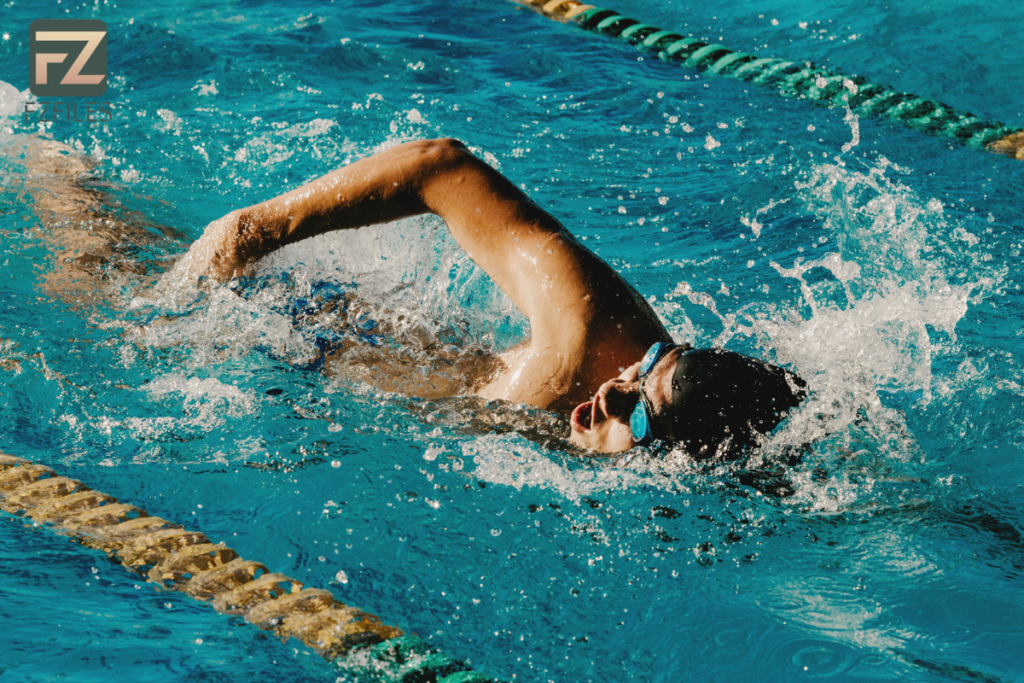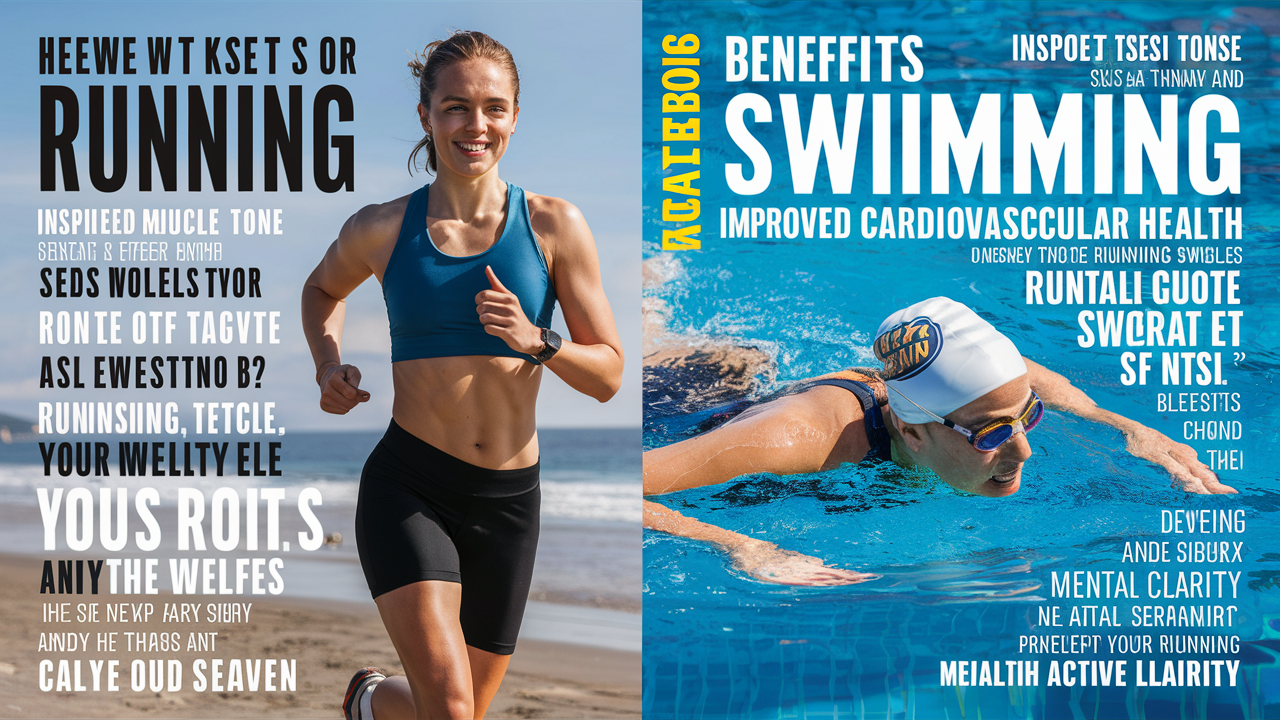Introduction
Running and swimming are two of the most popular forms of exercise, each offering unique benefits. This comprehensive guide will explore the advantages of both activities, comparing their impacts on cardiovascular health, muscle strength, mental well-being, and overall fitness. Whether you’re an athlete or just looking to improve your health, understanding the benefits of these exercises can help you make informed decisions about your fitness routine.
Cardiovascular Health
Running
Running is a high-impact aerobic exercise that significantly improves cardiovascular health. It strengthens the heart, increases lung capacity, and enhances overall cardiovascular endurance. Regular running can lower the risk of heart disease, high blood pressure, and stroke. It also helps in maintaining a healthy cholesterol level by increasing high-density lipoprotein (HDL) and decreasing low-density lipoprotein (LDL).
Swimming
Swimming is an excellent cardiovascular workout that is low-impact, making it suitable for individuals of all ages and fitness levels. It improves heart function, enhances circulation, and increases lung capacity. Swimming engages the entire body, promoting better oxygen and blood flow throughout. Studies have shown that regular swimming can reduce the risk of cardiovascular diseases and improve overall heart health.
Muscle Strength and Endurance
Running
Running primarily targets the lower body, strengthening muscles in the legs, hips, and core. It helps build muscle endurance, particularly in the quadriceps, hamstrings, calves, and glutes. Additionally, running promotes bone density and can prevent osteoporosis. Interval running or hill sprints can further enhance muscle strength and anaerobic capacity.
Swimming
Swimming provides a full-body workout, engaging muscles in both the upper and lower body. It strengthens the arms, shoulders, back, core, and legs. The resistance provided by water makes muscles work harder, enhancing strength and endurance without the strain of weight-bearing exercises. Swimming also improves flexibility and can aid in muscle recovery and rehabilitation.
Mental Health and Stress Relief
Running
Running is well-known for its mental health benefits. The release of endorphins, often referred to as the “runner’s high,” can significantly boost mood and reduce stress. Running outdoors also allows for exposure to nature, which has been shown to have a calming effect on the mind. Regular running can alleviate symptoms of depression, anxiety, and other mental health conditions, contributing to overall emotional well-being.

Swimming
Swimming is equally beneficial for mental health. The rhythmic nature of swimming can be meditative, promoting relaxation and reducing stress levels. The buoyancy of water has a soothing effect, and the controlled breathing techniques used in swimming can help manage anxiety. Swimming has also been linked to improved sleep patterns and enhanced cognitive function, providing a holistic approach to mental well-being.
Weight Management
Running
Running is one of the most efficient ways to burn calories and lose weight. Depending on the intensity and duration, running can burn a significant number of calories, helping to create a calorie deficit necessary for weight loss. It also boosts metabolism, which can aid in long-term weight management. Incorporating intervals and varying terrains can maximize calorie burn and keep workouts challenging.
Swimming
Swimming is an effective calorie-burning exercise that can aid in weight loss and management. The resistance of water increases the effort required, enhancing calorie expenditure. Swimming for an hour can burn a substantial amount of calories, depending on the stroke and intensity. Moreover, swimming helps in building lean muscle mass, which further aids in increasing metabolic rate and maintaining a healthy weight.
Joint Health and Injury Prevention
Running
While running is beneficial for cardiovascular and muscular health, it is a high-impact activity that can put stress on the joints, particularly the knees and ankles. Proper running techniques, good footwear, and running on softer surfaces can help mitigate the risk of injury. However, individuals with pre-existing joint issues or arthritis may need to be cautious with running.
Swimming
Swimming is a low-impact exercise that is gentle on the joints, making it an ideal choice for individuals with arthritis, joint pain, or those recovering from injuries. The buoyancy of water reduces the strain on joints while still providing an effective workout. Swimming can improve joint flexibility and mobility, and it is often recommended as a rehabilitation exercise for injury recovery.
Social and Recreational Benefits
Running
Running can be a social activity, whether through running clubs, races, or simply running with friends. It fosters a sense of community and provides opportunities for social interaction and support. Participating in races or marathons can be motivating and rewarding, offering a sense of accomplishment and purpose.
Swimming
Swimming also offers social benefits, with many opportunities to join swim clubs, participate in classes, or enjoy recreational swimming with family and friends. Swimming in community pools or open water environments can be a social and enjoyable activity, promoting a sense of camaraderie and shared experiences.
Conclusion
Both running and swimming offer a plethora of benefits, from enhancing cardiovascular health and building muscle strength to improving mental well-being and aiding in weight management. Each activity has its unique advantages and can cater to different fitness levels and health needs. Incorporating either or both into your fitness routine can lead to a balanced and healthy lifestyle. Whether you prefer the high-energy impact of running or the soothing, full-body workout of swimming, the key is to stay active and find joy in your chosen form of exercise.

[…] have to mean expensive gym memberships or crowded fitness classes. With a few simple bodyweight exercises, you can get a full-body workout from the comfort of your own home. In this article, we’ll […]
[…] Roseburg City Hall, 900 SE Douglas Ave. The hearing will also be streamed live on the city’s Facebook […]